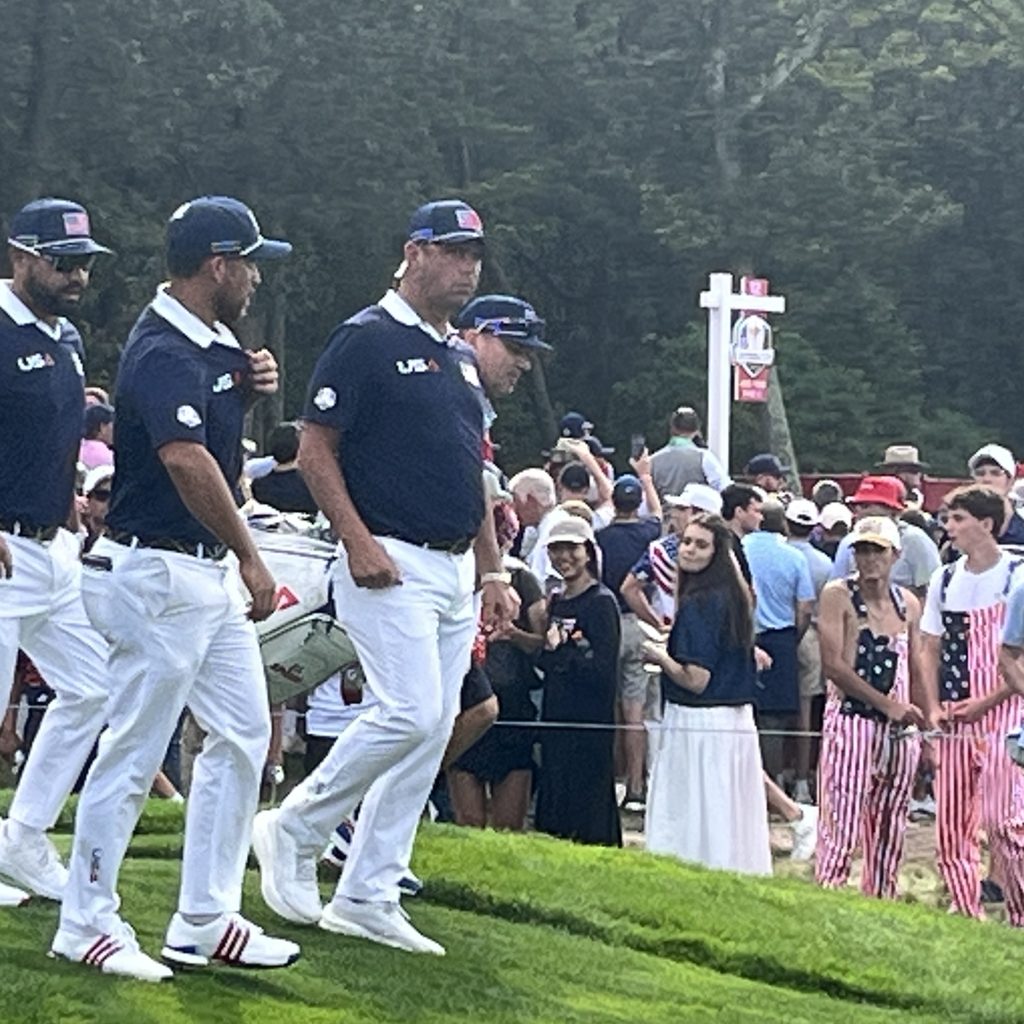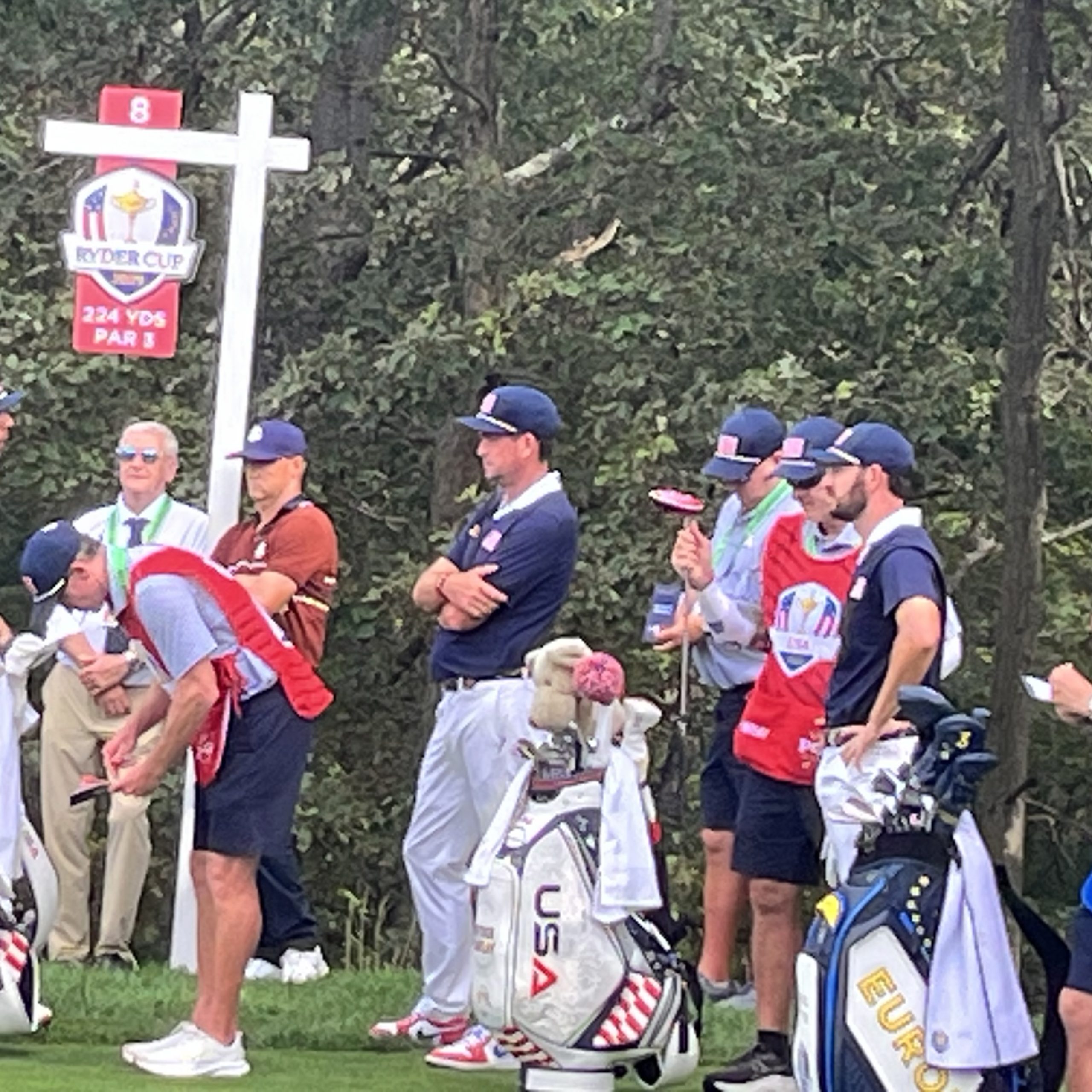Comments (0)
PLC Newsletter: Leadership Lessons from the 2025 Ryder Cup: Why Love Wasn’t Enough
I’m back from a newsletter hiatus and I’m coming in hot. I thought a fitting return would be me giving my 25 cents on the 2025 Ryder Cup. If you know me, you’ll know that I’m a golf fan. I play golf, I watch golf, I read golf news. I’ve written about golf before and I could talk about it for hours on end.
The Ryder Cup and Its Stakes
The 2025 Ryder Cup was played last weekend at Bethpage Black at Bethpage State Park in Long Island, New York. I had the distinct privilege of attending a practice round and formal day of play.
At a high level, the Ryder Cup is like the Olympics. Played every 2 years, U.S. and European players, who typically play individually, are selected to play on teams for honor and glory. Historically, they do this for love of country without pay. I’m not going to spend time getting into why I said “historically” because going down that rabbit hole would require me writing a much longer article that you won’t read.
In case you didn’t hear it already, because there are a million other things going on in the world that are, frankly, more important than the Ryder Cup (gasp! clutch pearls!), the U.S. team launched a historic comeback on day 3 of the tournament, yet lost to Europe 15 to 13.
I’m here to talk about management and leadership.
Bottom line: Even in golf, as in business, passion and expertise alone don’t make a leader. Intentional preparation, vision, and organizational support do.
From Player to Captain: Keegan Bradley’s Appointment
A six-person committee consisting of three PGA of America officials and three players selected Keegan Bradley as Ryder Cup captain in July 2024 after Tiger Woods withdrew. From day 1, I was scratching (and, if you know me, shaking) my head about that decision. What qualified Keegan Bradley as captain?
Keegan Bradley is an American professional golfer who has been competing on the PGA Tour since 2011 and won 8 times. Yes, he played in the Ryder Cup in 2012 and 2014. Yes, it is well documented that he is passionate about the event. Yes, we know that he was sad and frustrated that he didn’t get picked to play in 2023. That has all been captured on video and shared with the world ad nauseam. But does that make an effective Ryder Cup captain? Um, no.

U.S. players J.J. Spaun, Xander Schauffelle and Vice Captain Gary Woodland.
Management vs. Leadership in Action
In organizations, people get promoted every day from individual contributor to people manager. Often, it is the next logical step for a seasoned subject matter expert. In an ideal world, those people would have already been given assignments to help them learn and develop leadership and management capabilities to get them promotion ready. Alternatively, those leaders could be given that support shortly after assuming the role. And, real talk, we know that the ideal often does not happen and teams are left to deal with the aftermath. I argue that there is no evidence that the former occurred. Keegan has implied that the latter did occur.
Traditionally, management means ensuring work gets done on time and on budget. In practice, that looks like operations, execution, efficiency and resource allocation. Traditionally, leadership means inspiring and guiding people toward a vision. In practice, that looks like influence, inspiration, adapting to change and people development. That said, there may be nuance to how this comes to life in the world of golf. So what does “good” look like in the Ryder Cup context?
The Role and Realities of a Ryder Cup Captain
The role of Ryder Cup captain is a big one and the stakes are high. Keegan had a little more than a year to figure out the role, which not only included developing a vision and strategy for what he needed to do for the U.S. team to win but also how he wanted to do it for a multitude of things, e.g., vice captain selection, course design, player selection beyond those who automatically qualified, etc.

U.S. Captain Keegan Bradley with players Patrick Cantlay, Sam Burns et al. waiting for the 8th green to clear.
Typically, it takes a year for anyone to effectively master a role, so the task was not totally outside the scope of possibility. However, Keegan had to do all of those things while also competing on the PGA tour, which, in and of itself, is an extremely challenging thing to do. And, by all accounts, he was doing it well, ending up in the final playoff tournament.
Additionally, there was the constant distraction of the – will he or won’t he serve as the first playing captain since Arnold Palmer in 1963 – nonsense. Keegan had not served as a vice captain in the past. Again, he implied that he was reaching out to people for advice and counsel and, I imagine, even more were reaching out to him to give it, solicited or not. That’s what people do.
The Flawed Assumption of Natural Leadership
Even with the support of vice captains, there is an opportunity cost of time. I question whether Keegan had sufficient time to ideate and plan in advance to the level that was required to win. Therefore, I found the idea of him effectively leading the team in real time on the course, while also playing and winning points was ludicrous. It was as if leading as Captain was an innate gift that Keegan had that would simply work out because he loved the Ryder Cup.
That’s not how this works. That’s not how ANY of this works. While some folks have natural strengths that make leading and managing people easier for them than others, leadership and management skills are hard skills that can and should be learned and practiced over time by everyone who assumes formal positional authority. While there is definitely best practice, what is needed to be successful is nuanced and will vary based on the context, i.e., the environment and the needs of the people within it.

Saturday night planning and practice to right the sinking ship.
Culture, Environment and Performance
There is not enough time in the day to audit how many golf analysts and journalists who were on the “Keegan should be a playing captain” bandwagon who are now Monday morning quarterbacking, singing a different tune. What I will say is that I am SO glad that some respected voices in the golf world, like seasoned GOLF channel host Rich Lerner, are speaking out about the need for change.
“If you create the conditions for this to be fun…you’re more likely to be unified when it matters. You’re more likely to be comfortable. You’re more likely to be loose. You’re more likely to make the puts when the pressure is more ratcheted up.” YES! Bringing people together, creating a positive environment, building safety and rapport begets performance. I couldn’t have said it better myself.
Final Thought: The Organizational Failure
While I spent my time focused on Keegan, Keegan was only in this position because the PGA of America put him there. He was not set up for success. This loss is on the organization. What were their selection criteria? Did they look at patterns of winning teams over time to assess, then evaluate the data? What were the necessary inputs to get to the desired outputs? What leadership and management capabilities do we want in a captain to put us in the best position to win? What environment do we want to create for the players to help perform at their best not only for themselves but for one another?
In the U.S., we’ve prioritized our individualism. To win a team competition, if we want different results, we gotta do different isht. Building and doing all of that takes thoughtfulness, time and intention. That’s what the European team has been doing for a long time, even before Luke Donald became captain. It’s not just the what. It’s also the how.
If you’re reading this and thinking, “Let’s get Tiger in there,” you’re not picking up what I’m dropping. Now is a time to take a step back and reimagine it. All of it.




LEAVE A REPLY
Your email address will not be published. Required fields are marked *